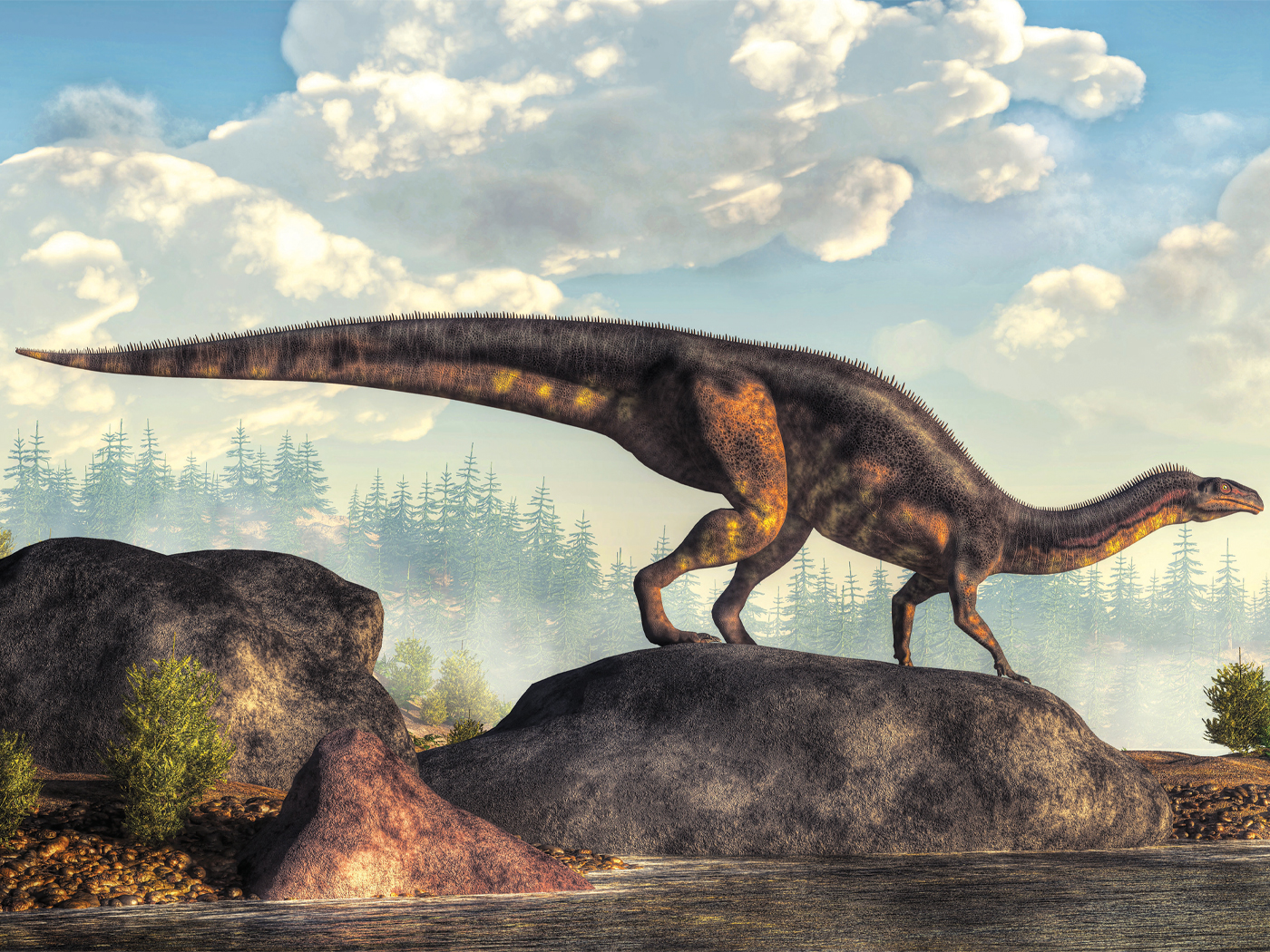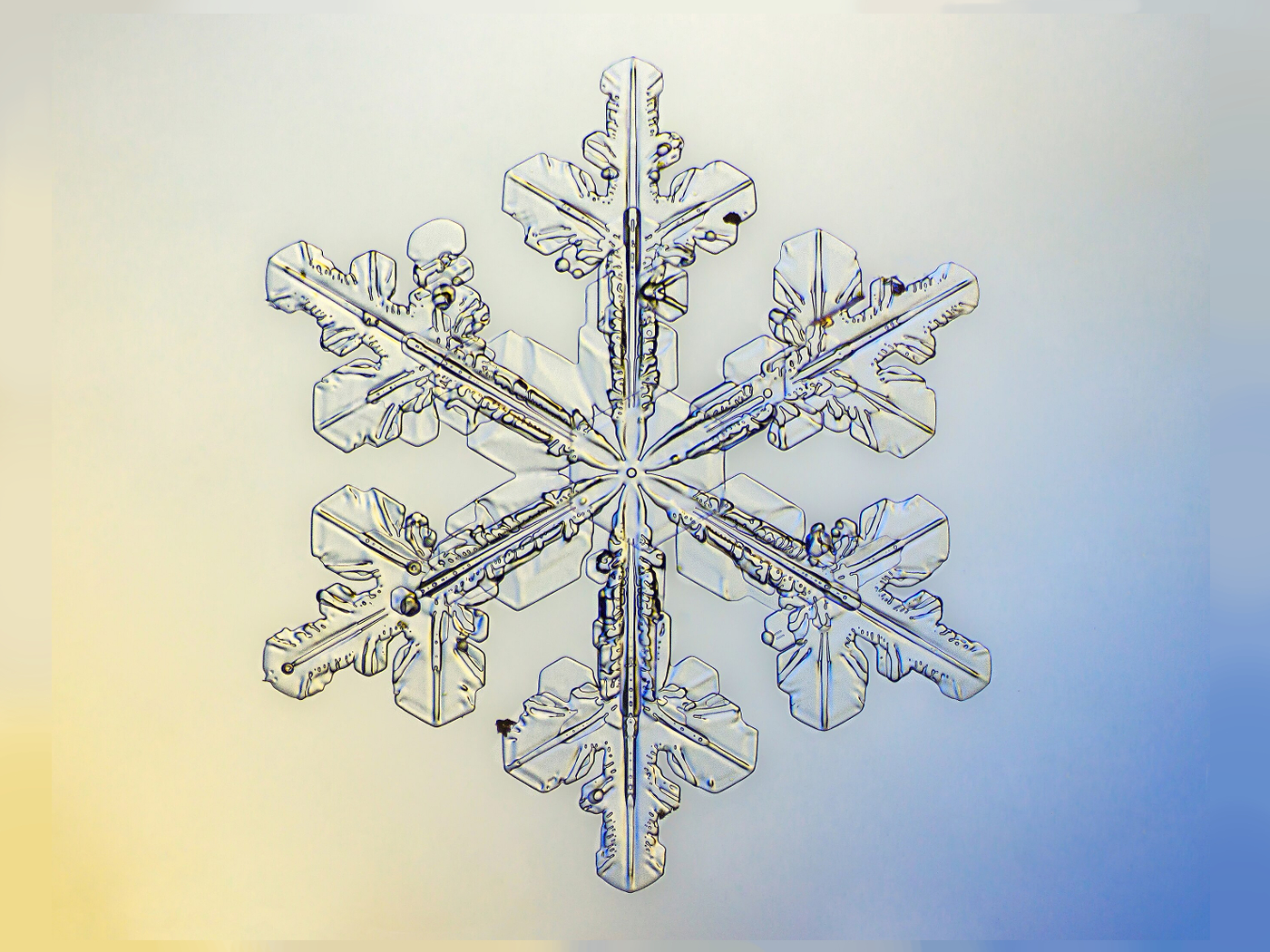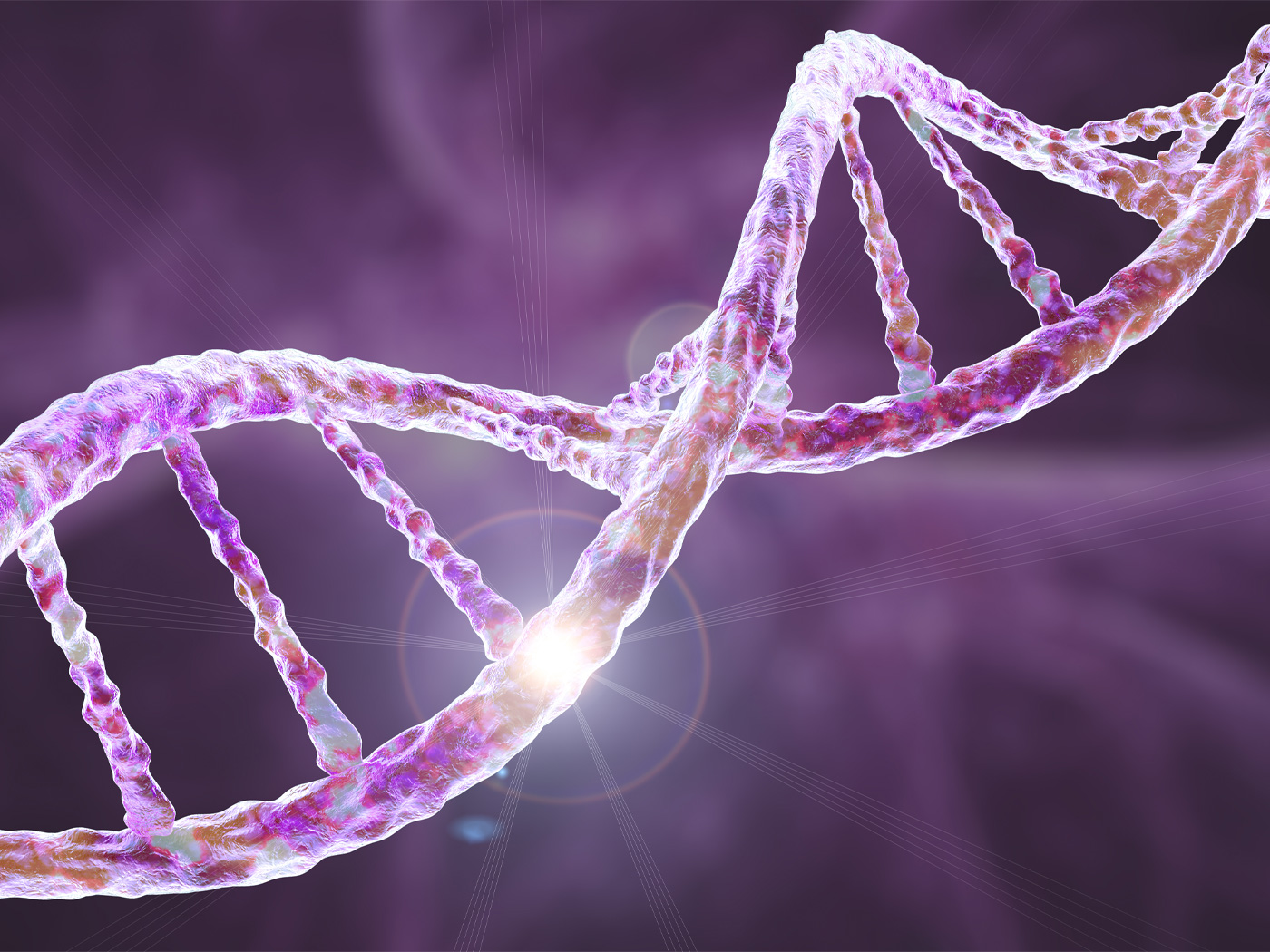In the fictional movie "Jurassic Park" dinosaurs were cloned by obtaining the genetic information necessary to make a dinosaur from ancient DNA (aDNA) sequences extracted from dinosaur blood found in the gut of mosquitoes embedded in amber. Although most scientists still consider the science in Jurassic Park fantasy, acquiring dinosaur DNA has become a possibility over the past few years based on the attempts of sequencing small pieces of aDNA from archaic man and animals. Is it possible that aDNA and other biomolecules such as proteins in extinct organisms could survive environmental conditions well enough for thousands of years, or according to secular scientists, millions of years?
In March 2005, Mary Schweitzer and her colleagues published a paper in Science describing the presence of soft tissue (cellular material) in the fossilized femur of a Tyrannosaurus rex unearthed in eastern Montana.1 Schweitzer et al. reported the presence of structures that appeared to be blood vessels and blood cells with nuclei where DNA could be found. Many of the tissues could be stretched repeatedly and returned to their original shape indicating the presence of elastic proteins commonly found in blood vessels. Pictures of the tissue and experiments comparing the T. rex tissue with ostrich bone tissue appeared to confirm that the material was soft tissue. The presence of soft tissue, which decomposes rapidly after an organism dies, fits the Creation model (asserting that dinosaurs lived recently, in the last 10,000 years) better than an evolutionary scenario making dinosaurs older than 65 million years. However, the environmental factors responsible for preserving soft tissues in fossilized bone are unknown, and until they are determined, creationists as well as evolutionists can't be sure if there is a mechanism that preserves soft tissue indefinitely. After all, until the Schweitzer discovery, it was not believed that intact blood vessels and blood cells, which normally decompose rapidly upon death, could still be in a dinosaur bone after even a few years…much less 10,000 years or 65 million years.
Is it possible this tissue still has DNA and proteins? Although it is unknown how soft tissues can be preserved in fossilized bone and how long they persist, DNA and protein degradation kinetic studies have been done to extrapolate how long DNA and proteins are able to last once an organism dies. These studies show that small DNA fragments (<500 base pairs) still retaining enough of their original sequence integrity to identify the organism of origin would have to be less than 10,000 years old if the specimen was preserved in temperate climates.2,3,4 The moisture or humidity surrounding the animal's cells, and how fast the sample was fossilized would also influence the rate of aDNA decay. The environmental conditions significantly affect how long aDNA would be preserved and it is possible to extend the "life" of aDNA by lowering the environmental temperature.2,3,4 Molecular biology laboratories keep DNA indefinitely in a freezer at -80ºC (although no one, obviously, has done this for thousands of years!), and kinetic studies predict that at polar temperatures (-50ºC) the "life" of identifiable DNA may be extended to 100,000 years.2,3,4 The recent sequencing of 28 million bases of mammoth DNA extracted from frozen tissue likely confirms the assumption that DNA lasts longer at colder temperatures.5 Some proteins may last even longer (up to a million years) as small peptide fragments of the original complete protein. Other proteins such as collagen, a protein found in bone, probably completely degrade in less than 30,000 years, but this obviously is far less than the 65 million years given for the age of the dinosaurs.6
Once an organism dies, DNA immediately begins to degrade. The damage that DNA undergoes after the cell dies leads to many changes that can make determining the original sequence difficult. DNA is contained in chromosomes typically millions of bases long, but at death the chemical bonds that form the spiral DNA ladder rapidly breakdown leading to fragmentation of DNA into short segments less than 500 bases long.4,7 Two of the four DNA bases that compose the genetic code, the purines adenine and guanine, are lost over time from the original DNA sequence. Base modification of cytosine can result in base substitutions in the proposed DNA sequences that weren't in the original sequence.4,7 These are just a few of the more common problems scientists face when trying to determine the original aDNA sequence from samples taken from organisms that have long been dead.
In spite of these problems, many short aDNA sequences have been published from a wide variety of fossilized and ancient organisms. Plants,8 bacteria,9 mammals,10 Neanderthals,11 and other archaic humans12 have had short aDNA sequences identified. Most of this aDNA information has been made possible from the multiple copies of mitochondrial DNA (mtDNA) that are found in each cell and the technology of the polymerase chain reaction (PCR). PCR is capable of amplifying millions of copies of a short stretch of DNA from just a few original aDNA molecules. The complete process of amplifying aDNA from an archaic source has many challenges however, and it is possible that none of the published sequences are valid. The PCR reaction is sensitive enough to amplify DNA from just one molecule of sample aDNA. This means that DNA contamination from humans and microbes that may already be present in the laboratory (from people simply breathing, microbes in the dust, or previous PCR reactions) may lead to amplification of the contaminating organism and not the intended aDNA.
Scientists working in this field have tried to establish a set of criteria that would insure the likelihood of valid published sequences.4 One of the conditions proposed is that any aDNA sequence needs to be reproduced in an independent laboratory. This is a basic premise of the scientific method stipulating that true scientific discovery needs to be reproducible, and this requirement is commendable.
There are many other guidelines for determining the validity of an aDNA sample; unfortunately, one of the guidelines used is whether the aDNA sequence in question follows evolutionary theory for the origin and time of the appearance of the organism being sequenced. This was evident in two cases involving aDNA sequences published for a putative dinosaur bone and a bacterium. In 1994, Woodward et al.13 reported that an 84 base pair sequence of the cytochrome b gene from mtDNA extracted from a bone sample found in Cretaceous rock was most closely related to mammalian cytochrome b DNA. Because of the size of the bone and its location in Cretaceous rock, it was assumed to be that of a dinosaur. Woodward was thoroughly criticized for his findings14,15 because (1) His work was not reproducible in an independent laboratory,
(2) dinosaur DNA could not have lasted that long (remember, DNA is degraded in just 10,000 years), and (3) "every paleontologist knows" that dinosaurs are more closely related to birds than mammals. One of Woodward's most vocal critics was Mary Schweitzer working at the time for the Museum of the Rockies in Bozeman, Montana. Schweitzer and Blair Hedges wrote a rebuttal to Woodward's work declaring,
. . . a putative dinosaur sequence would be expected to cluster with birds and crocodilians in a phylogenetic analysis of amniotes.14
In spite of the meticulous care that Woodward's group had taken to insure there was no contamination of their samples, Schweitzer and Hedges (and others) contended that the mtDNA cytochrome b sequence was contaminated with human DNA because it was not independently verified in another lab and because their phylogenetic analysis grouped the putative dinosaur mtDNA cytochrome b sequence with human DNA.
In a similar case, Vreeland et al. published the complete sequence of the 16S rDNA gene from a Bacillus species of bacteria extracted from a putative 250 million year old salt crystal.9 Not only did they acquire an aDNA sequence that closely resembled modern Bacillus, but succeeded in culturing the organism. Again critics claimed that the cultures and aDNA samples had to be contaminated based on the assumption that a 250 million-year-old organism could not be that closely related to modern bacteria and culturing something dormant for 250 million years simply is science fiction. Vreeland's claims have not been reproduced in an independent laboratory and many scientists in the field continue to doubt that aDNA can be extracted from organisms "millions of years old."
In contrast to Woodward and Vreeland, sequences from Neanderthal mtDNA were used to calculate the DNA contribution that Neanderthals may have made to early modern humans in Europe.16 This study also has not been independently verified, but has been hailed as an example of how aDNA can increase the knowledge of early human population genetics because the data generated supports the evolutionary notion that Neanderthals were not ancestors of modern humans.4 The acceptance of unverified work because it fits evolutionary thinking and the rejection of unverified work because it does not fit the evolutionary paradigm is a disturbing trend that surely will affect future research efforts with aDNA samples.
The Schweitzer team is in possession of tissue that may provide more information about aDNA and the age of the dinosaurs. This issue is already settled in many secular scientists minds, but if Schweitzer's team successfully extracts aDNA from the T. rex tissue it will either confirm that T. rex lived less than 10,000 years ago or send scientists back to the laboratory to figure out how DNA can survive 65 million years of environmental and geologic upheaval. If the aDNA extracted does not meet evolutionary presuppositions will the sequences be considered contaminated and go unpublished? Schweitzer acknowledged in a recent MSNBC interview that preliminary data collected were "intriguing,"17 as many scientist anxiously await the results of their biochemical analysis of the possible protein and DNA content from the T. rex tissue and the implications of these results.
Although Jurassic Park will remain a fantasy about an amusement park full of living dinosaurs, watching scientists scramble to conjure up new theories explaining the new data provided from soft dinosaur tissue may be more interesting and more entertaining.
References- Schweitzer, M. H., Wittmeyer, J. L., Horner, J. R., and Toporski, J. K. 2005. Soft-tissue vessels and cellular preservation in Tyrannosaurus rex. Science 307:1952-1955.
- Poinar, H. N., Höss, M., Bada, J. L., and Paabo, S. 1996. Amino acid racemization and the preservation of ancient DNA. Science 272:864-866.
- Smith, C. I., et al. 2001. Neanderthal DNA: not just old but old and cold? Nature 410:771-772.
- Willerslev, E., and Cooper, A. 2005. Ancient DNA. Proc. R. Soc. B 272:3-16.
- Poinar, H. N., et al. 2006. Metagenomics to paleogenomics: Large-scale sequencing of mammoth DNA. Science 311:392-394.
- Bada, J. L., Wang, S. W., and Hamilton, H. 1999. Preservation of key biomolecules in the fossil record: current knowledge and future challenges. Phil. Trans. R. Soc. Lond. B 354:77-87.
- Lindahl, T. 1993. Instability and decay of the primary structure of DNA. Nature 362:709-715.
- Golenberg E. M., et al. 1990. Chloroplast DNA from a Miocene Magnolia species. Nature 344:656-658.
- Vreeland, R. H., Rosenzweig, W. D., and Powers, D. W. 2000. Isolation of a 250 million-year-old halobacterium from a primary salt crystal. Nature 407:897-900.
- 1Orlando, L., et al. 2002. Ancient DNA and the population genetics of cave bears (Ursus spelaeus) through time and space. Mol. Biol. Evol. 19:1920-1933.
- Krings, M., et al. 1997. Neanderthal DNA sequences and the origin of modern humans. Cell 90:19-30.
- Adcock, G. J., et al. 2001. Mitochondrial DNA sequences in ancient Australians: Implications for modern human origins. Proc. Nat. Acad. Sci. 98:537-542.
- Woodward, S. R., Weyand, N. J., and Bunnell, M. 1994. DNA sequences from Cretaceous period bone fragments. Science 266:1229-1232.
- Schweitzer, M. H., and Hedges, B. S. 1995. Detecting dinosaur DNA. Science 268:1191.
- Allard, M. W., Young, D., and Huyen, Y. 1995. Detecting dinosaur DNA. Science 268:1192.
- Serre, D., et al. 2004. No evidence of Neanderthal mtDNA contribution to early modern humans. PLoS Biol. 2:313-317.
- Boyle, A. 2006. Proteins could reveal new dinosaur secrets. MSNBC.COM., Feb. 20, 2006, see http://www.msnbc.msn.com/id/11385533.
* Dr. Daniel Criswell has a Ph.D. in Molecular Biology.
Cite this article: Criswell, D. How Soon Will Jurassic Park Open? Acts & Facts. 35 (6).













